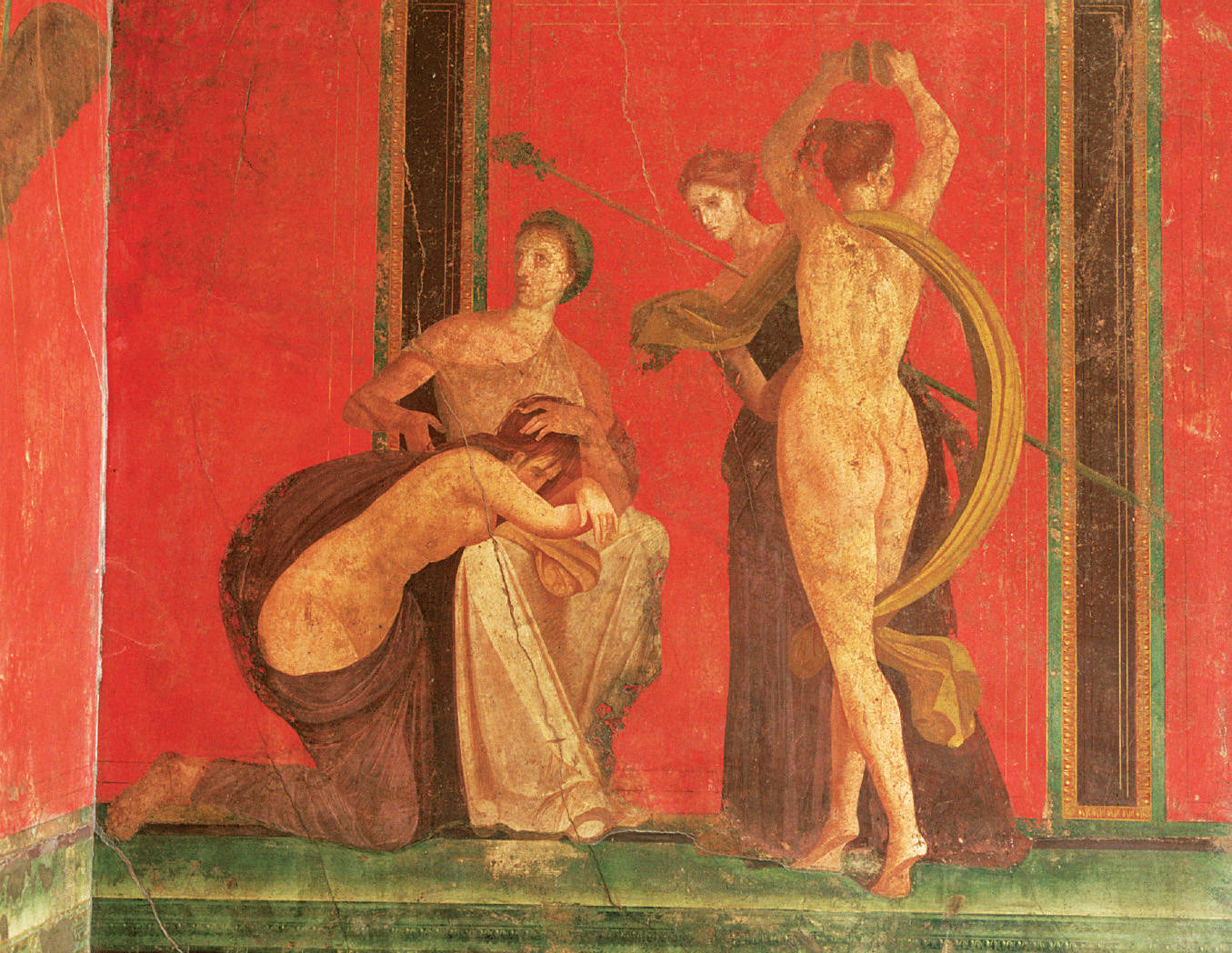Visual Source 5.5
Mystery Religions
In addition to the official cults and the worship of household gods, by the first century C.E. a number of newer traditions, often called “mystery religions,” were spreading widely in the Roman Empire. Deriving from the eastern realm of the empire and beyond (Greece, Egypt, and Persia, for example), these mystery religions illustrate the kinds of cultural exchange that took place within the Empire. They offered an alternative to the official cults, for they were more personal, emotional, and intimate, usually featuring a ritual initiation into sacred mysteries, codes of moral behavior, and the promise of an afterlife. Among the most popular of these mystery cults in Pompeii was that of Isis, an Egyptian goddess who restored her husband/brother, Osiris, to life and was worshipped as a compassionate protector of the downtrodden.
Another mystery cult, this one of Greek origin, was associated with Dionysus, a god of wine, ecstasy, and poetic inspiration and especially popular with women. Often associated with drunkenness, trance states, wild dancing, and unrestrained sexuality, the cult of Dionysus encouraged at least the temporary abandonment of conventional inhibitions and social restrictions as initiates sought union with Dionysus. A series of wall paintings on a Pompeii building known as the Villa of Mysteries depicts the process of initiation into the cult of Dionysus, perhaps in preparation for marriage. Visual Source 5.5 shows a particularly dramatic phase of that initiation in which a woman is ritually whipped, while a naked devotee dances ecstatically with a pair of cymbals above her head and a companion holds a rod of phallic symbolism sacred to Dionysus. In any such process of religious initiation, the initiate undergoes a series of trials or purifications in which he or she “dies” symbolically, achieves mystical union with the god, and is “reborn” into the new community of the cult.

Question
What aspects of the initiation process are visible in this image?
Question
How might you understand the role of whipping in the initiation process? How would you interpret the relationship of the initiate and the woman on whose lap she is resting her head?
Question
In what way is sexual union, symbolized by the rod, significant in the initiation?
Question
Why do you think Roman authorities took action against these mystery religions, even as they did against Christianity?
Question
What did the mystery cults of Isis or Dionysus provide that neither the state cults nor household gods might offer?